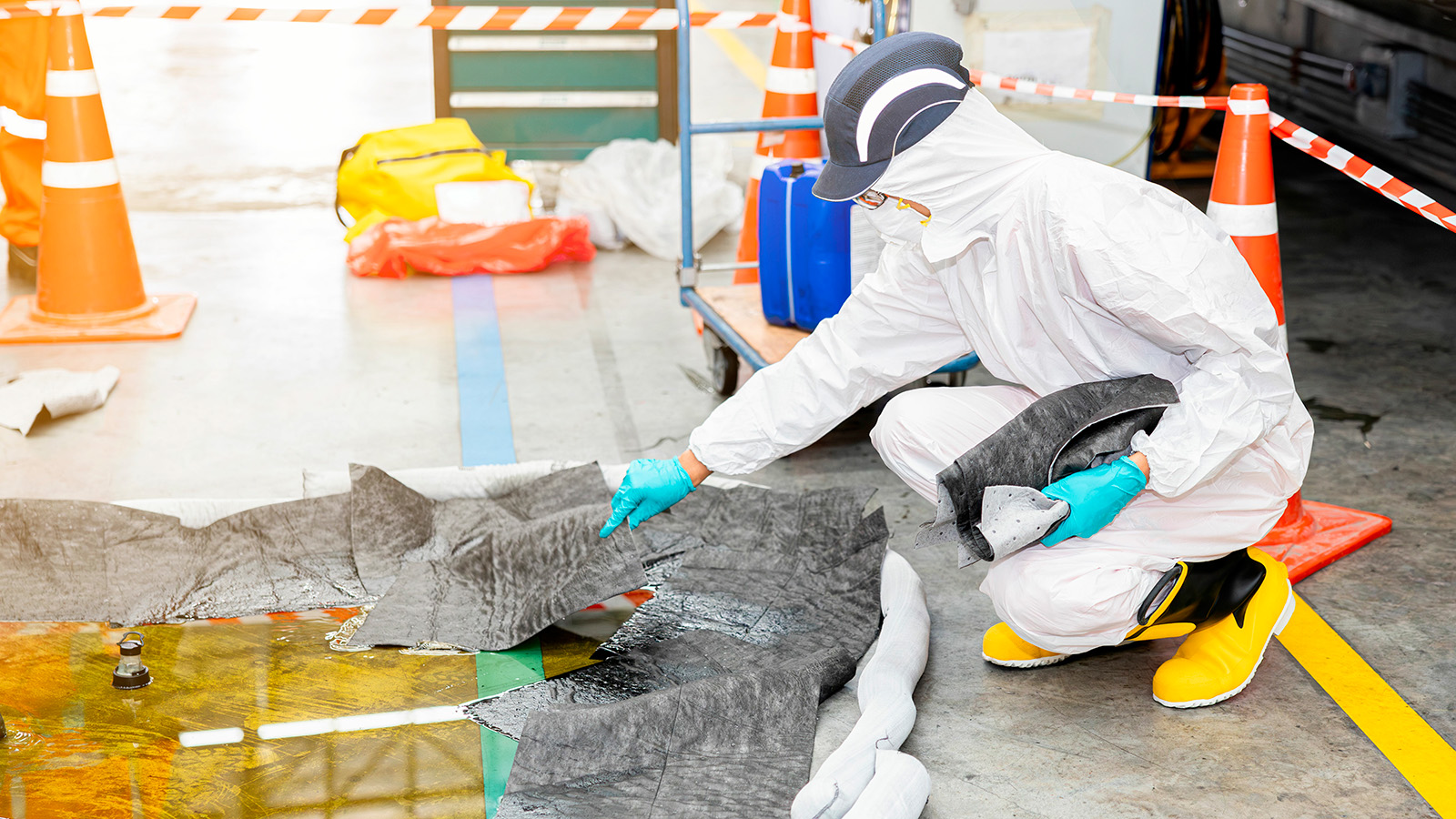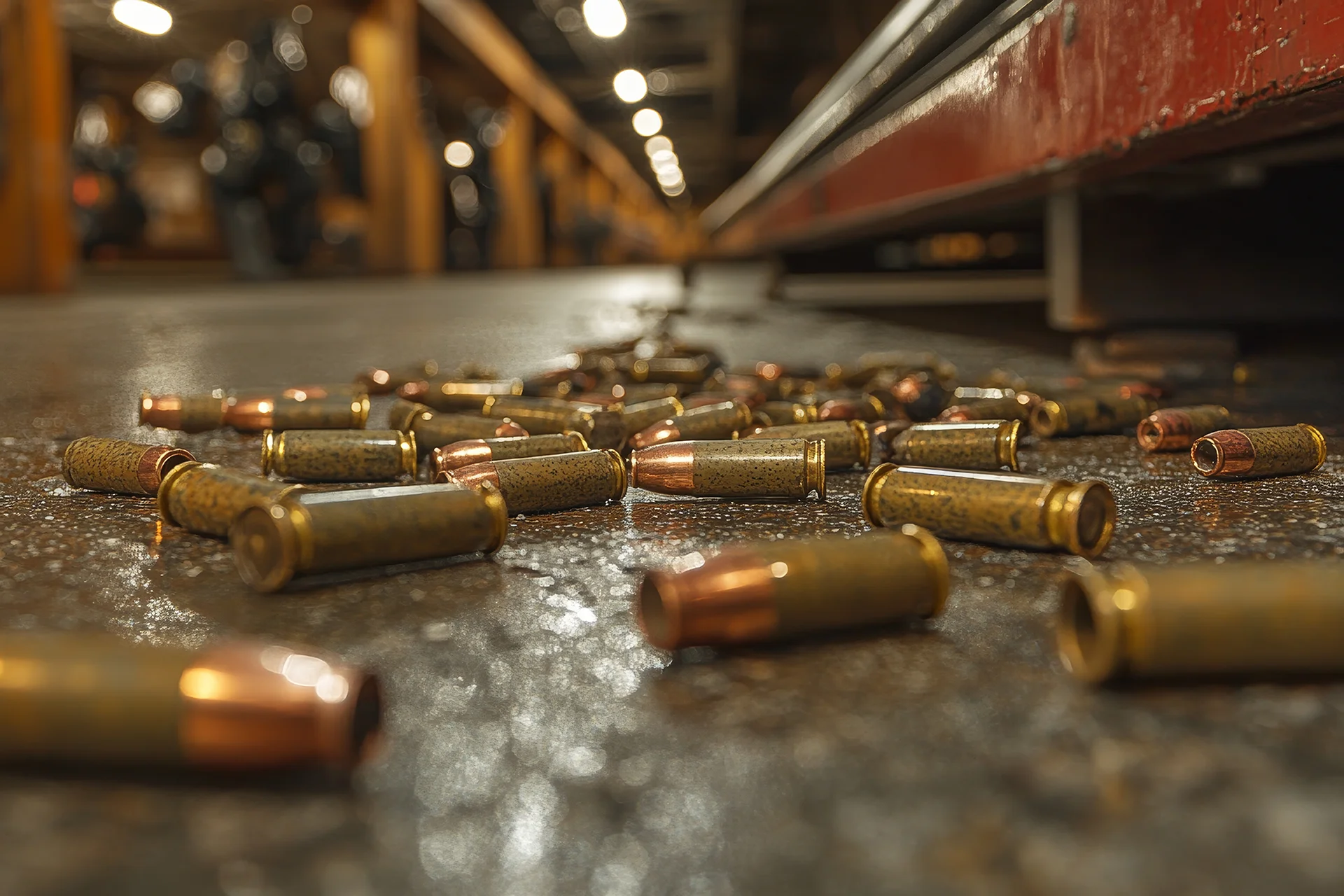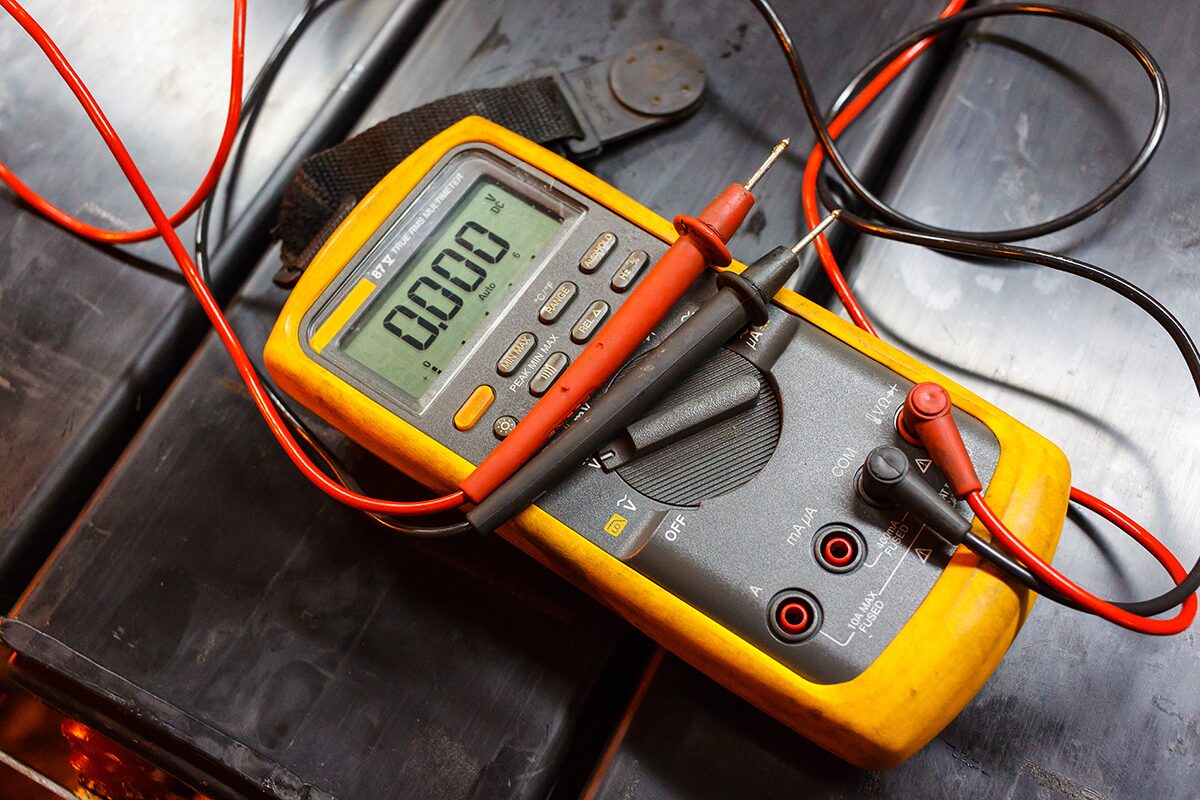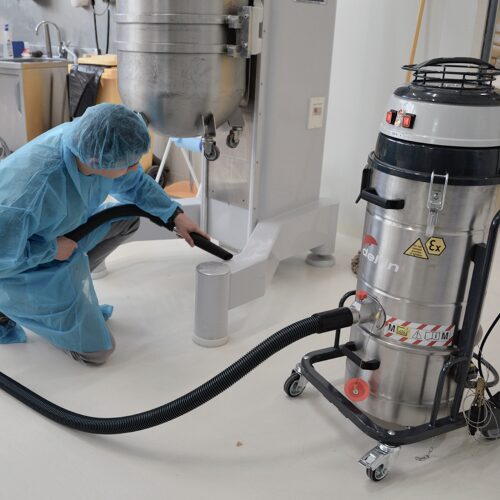We collect hazardous liquids with cloths – yet we build ATEX systems and cleanrooms with millimetre precision
In many industries, the focus on PPE, CE marking and ATEX classification is in place. But when a spill occurs, it is often practice – not equipment – that fails. For what do you actually do when there is a small pool of alkali, acid or solvent on the floor?
This article takes a closer look at the overlooked side of safety: the practical handling of spilled hazardous liquids – including corrosive, flammable and harmful substances. Perhaps this is where your risk assessment falls short.
We document everything – right up until there is a little liquid on the floort
In modern industrial production, millions are invested in safety and precision. We build ATEX zones, cleanrooms and closed systems where every gram of dust or millilitre of liquid can pose a risk. Sensors are validated. PPE is CE marked. Filter efficiency is documented.
But what happens when someone drops a glass of alkali – or spills a little solvent during cleaning?
How is it handled in practice? Is a cloth used? A mop? A neutralising absorbent? A collection tray? Or is it a combination – depending on who discovers the spill and where it happens?
We know that some workplaces have detailed contingency plans and specialised equipment. But we also know that many minor spills are handled quietly. Informally. Without documentation.
It is rarely ill will – rather routine. And that may be precisely the problem.
Discrepancies in everyday practice
It is often the small situations that reveal the big discrepancies. A few millilitres under a tank nozzle. A residue of liquid in a CIP system. A bottle dripping slightly from the cap. Incidents that do not necessarily trigger an emergency response, but still carry a risk – especially if the handling is inconsistent, imprecise, undocumented or entirely informal.
In some ATEX systems, flammable liquids are wiped up with paper cloths without grounding. In cleanrooms, household buckets may be used for acidic waste. In process environments, steaming liquids are collected with equipment that has neither a carbon filter nor acid resistance. And there are still workplaces where staff have no clear guidelines on whether the liquid they are handling is acidic, alkaline or flammable – and what that means for the collection process.
It is all understandable. It is practical. It is well-intentioned. But it is rarely sufficient.
Not all liquids look dangerous
Many corrosive liquids are transparent, odourless and look like water. But even in small amounts they can cause corrosion, vapour damage and personal injury – especially if they are left standing. It is not only about concentration..
A “mild” acid can become dangerous if it evaporates, reacts with other material or spreads in a sensitive area.
In cleanrooms, just a few millilitres can mean rejection.
In ATEX zones, it can be an ignition source.
Therefore, it is not the appearance of the liquid but its properties that determine the risk. And this requires knowing what you are dealing with – and choosing your equipment accordingly.
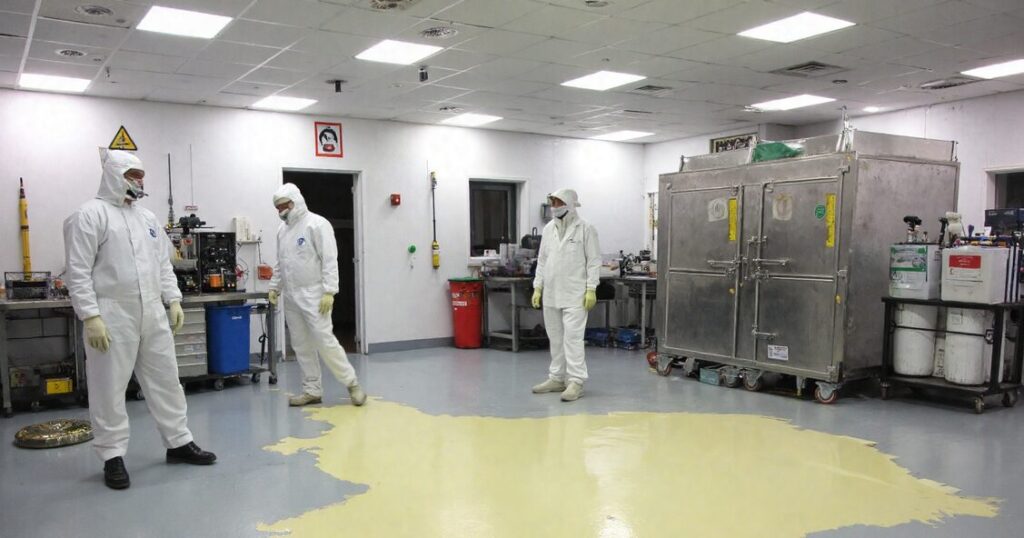
What is really the problem?
The problem does not necessarily arise at the moment a spill occurs. It arises in how we react – and what we choose to do afterwards. When minor incidents are handled with improvisation or informal routines, it sends a signal: This is not that important.
But liquids evaporate. Acids corrode. Solvents can be both flammable and harmful to health. And if they are handled incorrectly – or simply without focus – you risk not only acute damage but also invisible consequences: direct personal injuries, chemical impact on the indoor climate, corrosion in equipment, strain on ventilation systems or the build-up of flammable vapours.
It is not about doing everything perfectly. It is about doing it consciously.
Because when we collect a liquid, we should know:
- what it consists of,
- what risk it poses,
- how it affects equipment, materials, people and the environment,
- and which equipment is actually suitable.
All this may seem like overkill in the situation. But it is precisely when it feels unnecessary that the consequences can creep in.
Why don’t we talk more about it?
Måske fordi det virker banalt. Fordi spild og rengøring er hverdagsopgaver, som ingen vil problematisere. Fordi det næsten føles pinligt at stille spørgsmål til noget, der foregår i stilhed flere gange om dagen. Fordi det ikke er spændende nok til at komme med på næste sikkerhedsrunde. Eller måske fordi investering i brugbart udstyr nedprioriteres – fordi ingen forholder sig til risici og omfang.
Perhaps because it seems trivial. Because spills and cleaning are everyday tasks that no one wants to question. Because it almost feels embarrassing to raise questions about something that happens quietly several times a day. Because it is not exciting enough to be included in the next safety round. Or perhaps because investment in practical equipment is deprioritised – since no one addresses the risks and the scope.
But here lies a blind spot.
When we talk about chemical handling, it is often about storage, dosing, extraction and protective equipment. But once something has been spilled – and needs to be removed again – it falls outside many systems. It is neither a process nor a machine. It is just… something someone does.
That is why it often lacks ownership. No one really knows whether it belongs to production, cleaning, the safety group or maintenance. And it is precisely in this no man’s land that the lowest common denominator arises: We do as we usually do.
This is where we need to start the conversation. Not with equipment, but with awareness.
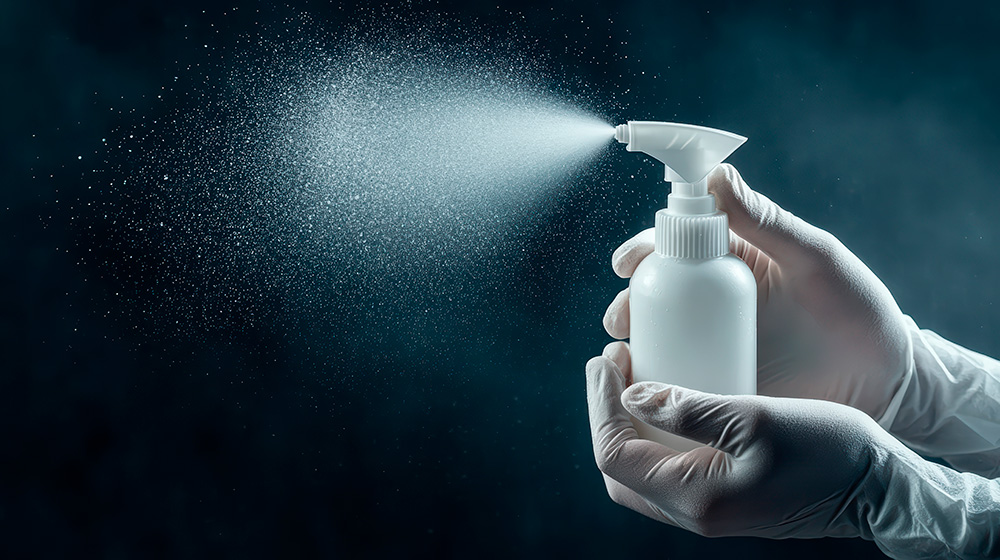
You may be spraying particles – without knowing it
In sterile rooms, it is not only about what is on the floor – but about what is stirred up again. When a conventional wet vacuum collects corrosive or volatile liquids without both a carbon filter and the correct particle filter, it risks spreading harmful vapours and aerosols back into the room. It is like spraying chemical particles into a controlled environment – only without being able to see it.
And in a cleanroom, invisible particles are far more dangerous than visible dirt::
- They can settle on equipment and products
- They can lead to cross-contamination
- They can compromise the entire classification (e.g. ISO 14644-1)
- Many believe that a HEPA filter is enough – but it only stops particles, not vapours.
That is why it is crucial to have both:
- ULPA or HEPA filter (particle filtration)
- Activated carbon filter (vapour retention)
The solution exists – but is often forgotten. It is not a luxury. It is a prerequisite.
It does not start with equipment – it starts with awarenessmed opmærksomhed
There is equipment that can safely handle aggressive liquids. There are filters, containers, materials and solutions for ATEX, cleanrooms and wet chemicals. That is not what we are lacking.
What we are lacking is to take the situation seriously enough to even ask: Are we doing this in a way we can stand by?
For perhaps it is not the vacuum cleaner or the collection tray that is the weakest link. Perhaps it is that no one has asked whether what is being used is even the right thing. Or that someone once chose a solution with good intentions – and since then no one has touched it.
This is not an accusation. It is an invitation to look more closely at what we do when we are not thinking too much about it. For it is precisely there that an opportunity for improvement lies hidden.
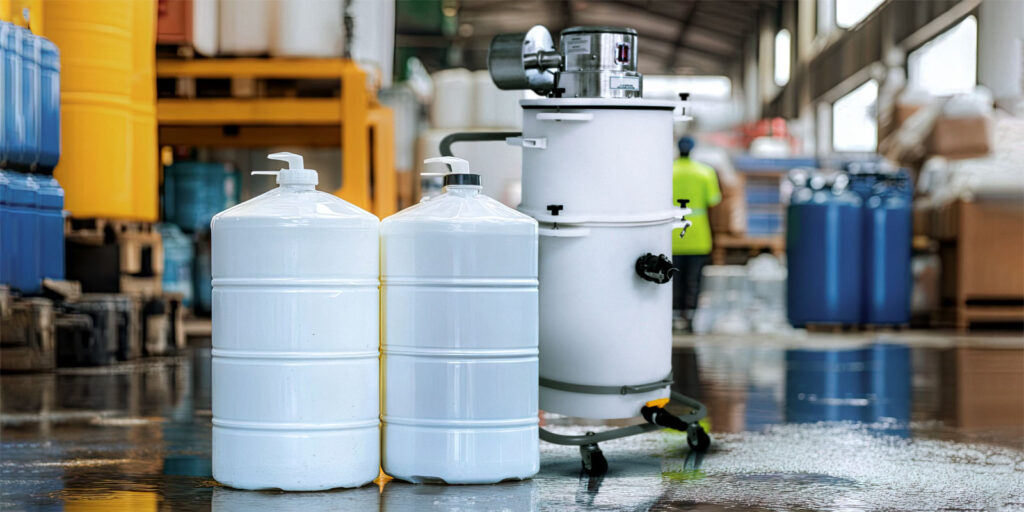
What does proper collection mean?
Proper collection is not only about removing the liquid – but about:
- containing the vapours before they spread
- avoiding static electricity that can ignite flammable vapours
- using materials that can withstand the liquid (not just plastic)
- filtering correctly if a vacuum is used – e.g. with a carbon filter or ULPA filter
- ensuring traceability if there are documentation requirements (e.g. ISO class, cleanroom or ATEX zones)
Often the problem is not the amount of liquid – but the equipment used to remove it.
May, 2025
Links to regulations from the EU, USA and Canada
Guide for Chemical Spill Response – American Chemical Society (ACS)
https://www.acs.org/about/governance/committees/chemical-safety/publications-resources/guide-for-chemical-spill-response.html
Chemical Hazards and Toxic Substances – U.S. OSHA
https://www.osha.gov/chemical-hazards
ATEX-directive 2014/34/EU – European Commission
https://single-market-economy.ec.europa.eu/sectors/mechanical-engineering/equipment-potentially-explosive-atmospheres-atex_en
Spill Response – Chemicals – Canadian Centre for Occupational Health and Safety (CCOHS)
https://www.ccohs.ca/oshanswers/chemicals/spill-response-chemicals.html
Seveso III-directive (2012/18/EU) – Wikipedia
https://eur-lex.europa.eu/eli/dir/1996/82/oj/eng

